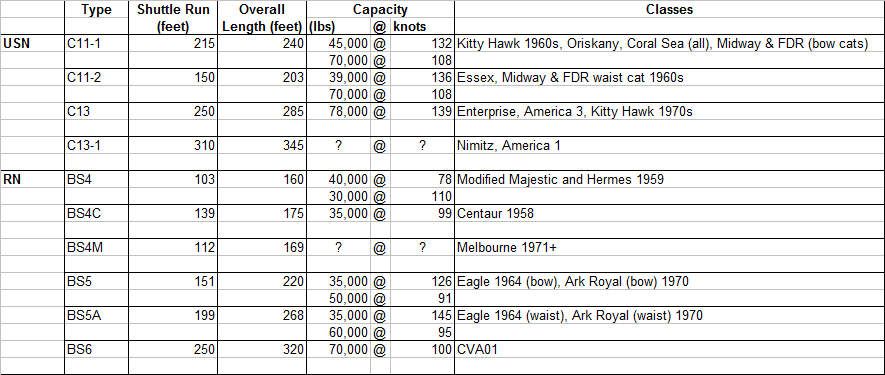Interesting reading, although the conclusion to go for a modernised Essex greatly depended on the actual material condition of the surplus hulls available for conversion.
The other ionteresting bit is the assumption that the Oriskany version would be able to operate Phantoms. Didnt't the USN decide that whilst possible for a Phantom to take off and land it was only just within safety margins and thus impractical for the F-4B/J ?.
Would the RAN have therfore had to go with the RN Spey toom or possibly even go with the F-4HL ?
G
The US Navy reporting on this subject should be taken with a grain of salt, as they wanted to get the Essex-class out of the attack role ASAP and acquire more supercarriers, which operating Phantoms off the Essex class does not help.
These days you can run the numbers yourself. Per Wikipedia the C-11 catapult mounted on the 27C and 125A Essexes could achieve the following:
39,000 pounds (18 t) at 136 knots;
70,000 pounds (32 t) at 108 knots
Per
Alternate Wars, an F-4B loaded for bear - that is, four Sparrows and three external tanks - weighs 54,000 lbs and has a stall speed of 147 knots. That's pushing it with the C-11, but it is just barely launchable at the cruise speed of 20 knots. And if an Essex can land Skywarriors it can land Phantoms, Phantoms don't hit the deck nearly as hard.
It probably is lower-margin than the US Navy wanted, particularly on takeoff, but it's doable since the Australians are largely interested in air-to-air combat.
The F-4J is a significantly hotter plane, so it's probably not safely operable from an Essex. The F-4S, on the other hand, is, thanks to getting back some more takeoff and landing margin.
Five hulls were surplus around when the Australians were looking at this option. Bunker Hill and Franklin had been in reserve since 1947, of course. Leyte and Philippine Sea had been laid up since the late 1950s. And Tarawa was decommissioned in 1960. I've seen reference to Philippine Sea being the ship of choice, and she makes the most sense. It's still unclear how much lingering damage Bunker Hill and Franklin were dealing with, and compared to Leyte and Tarawa Philippine Sea had spent the least amount of time active, if barely.


